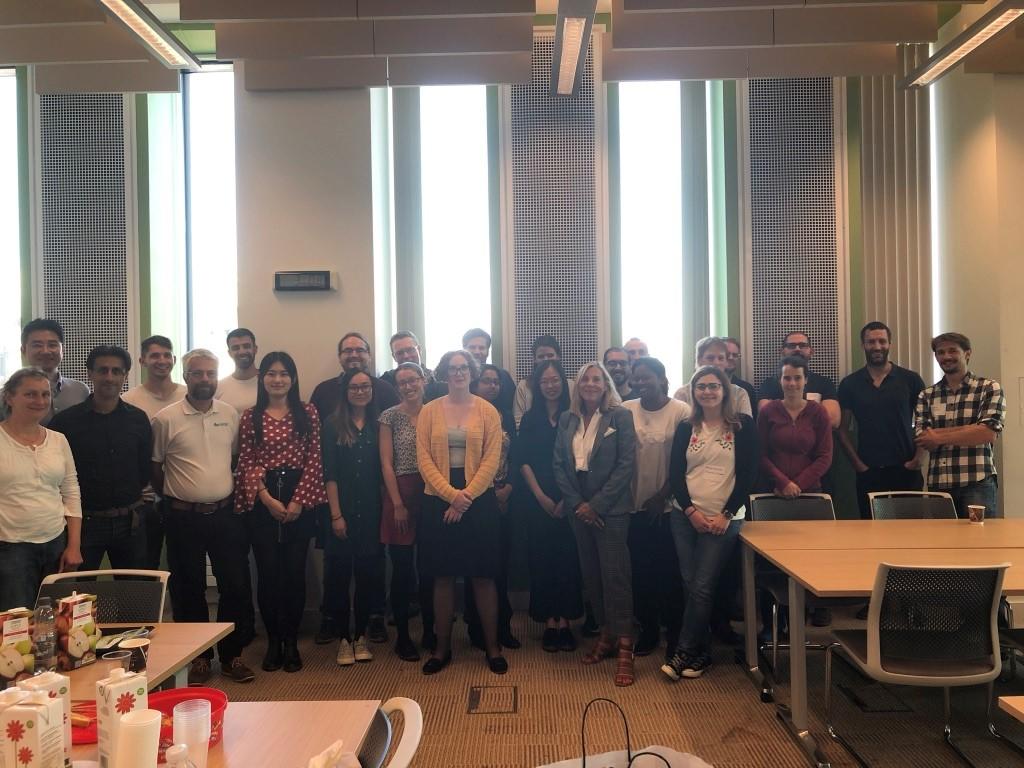An interview with Professor Liz Wellington
December 2019
Professor Liz Wellington is a member of the Microbiology Society, an active member of the environment theme within the School of Life Sciences at the University of Warwick and director of Warwick Environmental Systems Interdisciplinary Centre (WES IC). She holds a personal chair and, with her research group, is involved in the study of bacteria in soil and survival of pathogenic bacteria in the environment. The focus is on understanding activity of bacterial communities in situ, interactions with plants and the survival, activity and interaction of human, animal and plant pathogens with indigenous bacteria and the respective microbiomes.
Tell us more about your research
The past decade has involved the development of metagenomic approaches for the study of soil and water microbial diversity. Advances in the extraction of extracellular proteins from soil, have resulted in the extraction of both metaproteome and extracellular proteins in the metaexoproteome. Current work is focused on studying bacterial activity in situ using metaomics approaches.In the last two decades our work has focused on studying metagenomes and developing new methods for characterising the indicators of activity, RNA and proteins. The interrogation of metagenomes proved that resistance genes from human microbiomes were polluting soils and rivers in the UK and highly antibiotic resistant, pathogenic bacteria from sewage survived in diverse environments.

Metaproteomics workshop in Sheffield September 2019
Beneficial bacteria were also defined using a method newly developed in our lab for studying exoenzymes in environmental substrates termed metaexoproteomics. This proved that certain enzymes most often associated with soil bacteria were responsible for breakdown of key polymers such as chitin, but what was now clear is that not only did we know what activities were occurring in soil but it was possible to define which enzymes were present and the likely source of such enzymes by resolving the protein amino acid sequence. This gave an insight into who was doing what, where and when and we can now recover genes responsible for such activities without isolating the host bacterium.
Why does microbiology matter?
We still know so little about what micro-organisms actually do in the natural environment and I have spent the last 40 years trying to unravel microbial interactions in diverse environments including soil, which is one of the most challenging substrates to study.
After viruses, bacteria are the most numerous genetic entities on earth and colonise almost everything and, unlike viruses, they are active individually and in microbial assemblages termed microbiomes together with other components of the ecosystem from fungi to plants and animals.
Can you tell us a bit more about one of your research highlights from your career to date?
The extraction and analysis of DNA from soil was ground breaking in the 1980’s as we could determine more precisely the genetic diversity and then came the realisation that over 95% of this diversity was ‘missing’ and not captured by traditional cultivation approaches.
During the following three decades we were able to show genes moving within populations of bacteria, antagonism and antibiotic resistance in addition to discovering which pathogenic bacteria survive outside of their hosts and for how long.
Most importantly we worked to develop molecular methods to study microbial activity in situ as even now we have recovered less than 10% of the bacterial genetic diversity in soil. This means that there are many new genomes to mine and this may be resolved by direct cloning using metagenomic libraries, taking a snapshot in time of the bacterial genomes and preserving these in clone libraries to further exploit in heterologous expression hosts. This will yield the antibiotics of the future, new enzymes to tackle pollution, feed plants sustainably and manipulate greenhouse gases to reduce global warming. A further tool for in-depth analysis in situ was PCR, which when applied to DNA extracted from environmental substrates, was sensitive and specific and can be quantitative allowing analysis of specific genes and processes.


